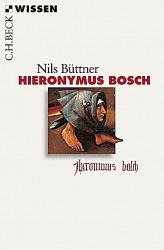Pokorny 2013
[Review of Büttner 2012] (Erwin Pokorny) 2013
[in: Journal für Kunstgeschichte, 17 (2013), Heft 4, pp. 268-275]
This is a review of Nils Büttner, Hieronymus Bosch, Munich, 2012. Pokorny notes: ‘Für Fussnoten oder das Abwägen widersprüchlicher Interpretationen ist in einem Taschenbuch freilich ebenso wenig Platz wie für grosse Abbildungen, in denen sich Detailbeschreibungen verfolgen liessen. Büttner hat jedoch den zur Verfügung stehenden Raum souverän genützt’ (evidently, for footnotes or the assessment of contradictory interpretations a pocketbook offers as little room as for large illustrations which could accompany detailed descriptions. However, Büttner has used the available space in a superior way).
An interesting aspect of this review is that Pokorny offers his own views on Boschian issues every now and then.
- Just like Büttner, he is sceptical about Koldeweij’s hypothesis suggesting that the St John on Patmos and St John the Baptist panels were meant for the altarpiece of the Brotherhood of Our Lady [p. 270].
- Concerning the The Field has Eyes drawing (Berlin): an analysis of the ink has shown that the ink of the Latin inscription is different from the ink used in the drawing itself. However, the fact that the inscription was added at a later moment, does not automatically exclude Bosch as the writer of the text [p. 272].
- Koldewij’s identification of the saint in the right exterior panel of the Vienna Last Judgement triptych as St Hippolyte is called ‘convincing’ [p. 273].
- Wirth and Belting’s suggestion that the central panel of the Garden of Delights shows the Earthly Paradise as it could have been if Adam and Eve had not sinned is denied. But Büttner’s argument that the central panel is infected with evil is not convincing either. Pokorny suggests that the central panel shows the Paradise where the righteous can enjoy the pleasures that were forbidden on earth on Judgement Day [p. 273-274].
- Some authors have suggested that the lost central panel of the so-called Pedlar triptych showed a Wedding at Cana. However, Pokorny concurs with Büttner when he writes that this is only one of many possibilities [p. 274].
[explicit 5 July 2022 – Eric De Bruyn]
